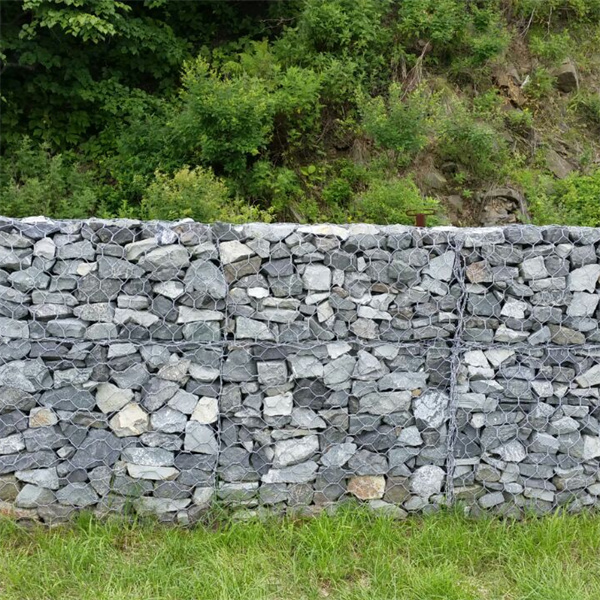নভে. . 10, 2024 01:39 Back to list
Optimal Gabion Culvert Solutions for Sustainable Water Management and Erosion Control
The Best Gabion Culvert An Innovative Solution for Sustainable Infrastructure
As the demand for sustainable infrastructure continues to grow, the use of gabion structures has gained significant attention. Among the various applications of gabion technology, gabion culverts stand out as an innovative solution for managing water flow in both urban and rural settings. This article explores the benefits, design considerations, and implementation of the best gabion culverts, highlighting their role in contemporary civil engineering.
Understanding Gabion Culverts
Gabion culverts are essentially drainage structures made of wire mesh filled with rocks, stones, or other suitable materials. These culverts serve multiple purposes, including controlling water flow, preventing erosion, and supporting roadways and pathways. Unlike traditional culverts, which often use concrete or metal, gabion culverts blend seamlessly with the surrounding environment, offering both functional and aesthetic advantages.
Environmental Benefits
One of the most significant benefits of gabion culverts is their environmentally friendly design. The use of locally sourced materials for filling reduces transportation emissions and costs. Additionally, the porous nature of gabions allows for natural water filtration, improving water quality as it flows through. This design helps mitigate the negative impact of stormwater runoff, a critical consideration in the face of increasing urbanization and climate change.
Moreover, gabion structures promote biodiversity. The spaces and gaps within the rocks provide habitats for small aquatic and terrestrial organisms, contributing to a more balanced ecosystem. This characteristic is particularly important as society seeks to restore natural habitats and preserve biodiversity in increasingly urbanized areas.
Design Considerations
When designing gabion culverts, engineers must account for various factors to ensure their longevity and effectiveness. First and foremost, the site’s hydrology plays a crucial role. Understanding water flow patterns, peak flow rates, and potential flood risks is essential for determining the size and design of the culvert.
Material selection is another critical aspect. The wire mesh used for gabions should be corrosion-resistant to withstand environmental factors, ensuring the structure's durability. Galvanized wire or PVC-coated products are commonly preferred for their longevity.
best gabion culvert

Furthermore, the size and shape of the rocks used to fill the gabions are important for both structural integrity and aesthetic appeal. Generally, larger stones provide better stability, while smaller stones allow for more natural water filtration.
Cost-Effectiveness
Gabion culverts are often more cost-effective than traditional options. The materials required for construction are generally less expensive, and the installation process can be quicker, particularly in remote areas where heavy machinery may not be feasible. Additionally, the maintenance costs for gabion structures tend to be lower, as they are less prone to damage compared to concrete or metal alternatives.
Despite their advantages, it's crucial to note that initial planning and design should not be underestimated. Investing time in proper engineering will ensure that the culvert performs well over its lifespan, ultimately leading to significant cost savings.
Implementation and Case Studies
Globally, gabion culverts have been successfully implemented in various projects. From rural roadways to urban drainage systems, these structures have demonstrated their ability to enhance water flow management while harmonizing with the natural landscape. Notable cases include their use in flood-prone areas, where their ability to absorb and dissipate water has been invaluable.
In some regions, governments and agencies have begun to recognize the potential of gabion culverts as part of green infrastructure initiatives. By integrating these structures into urban planning, cities can promote sustainable development while addressing pressing drainage issues.
Conclusion
Gabion culverts represent a forward-thinking approach to managing water flow in both rural and urban environments. Their environmentally friendly design, aesthetic versatility, and cost-effectiveness make them an appealing alternative to traditional culverts. As engineers and urban planners continue to seek innovative solutions for sustainable infrastructure, gabion culverts will likely play an increasingly vital role in creating resilient communities. Embracing such technologies not only addresses immediate infrastructure needs but also contributes to long-term ecological health and sustainability.
-
The Role of Galvanized Gabion Mesh in Riverbank Protection
NewsJun.26,2025
-
The Role of Gabion Basket Raised Bed in Sustainable Gardening
NewsJun.26,2025
-
Quality Assurance of Wire Mesh Gabion Baskets
NewsJun.26,2025
-
Installation Guide for Welded Gabion Box
NewsJun.26,2025
-
How to Choose the Right Gabion Box
NewsJun.26,2025
-
Different Types of Gabion Wire Mesh
NewsJun.26,2025
-
Why PVC Coated Gabion Mattress Is the Best Solution for Long-Term Erosion Control
NewsMay.23,2025






